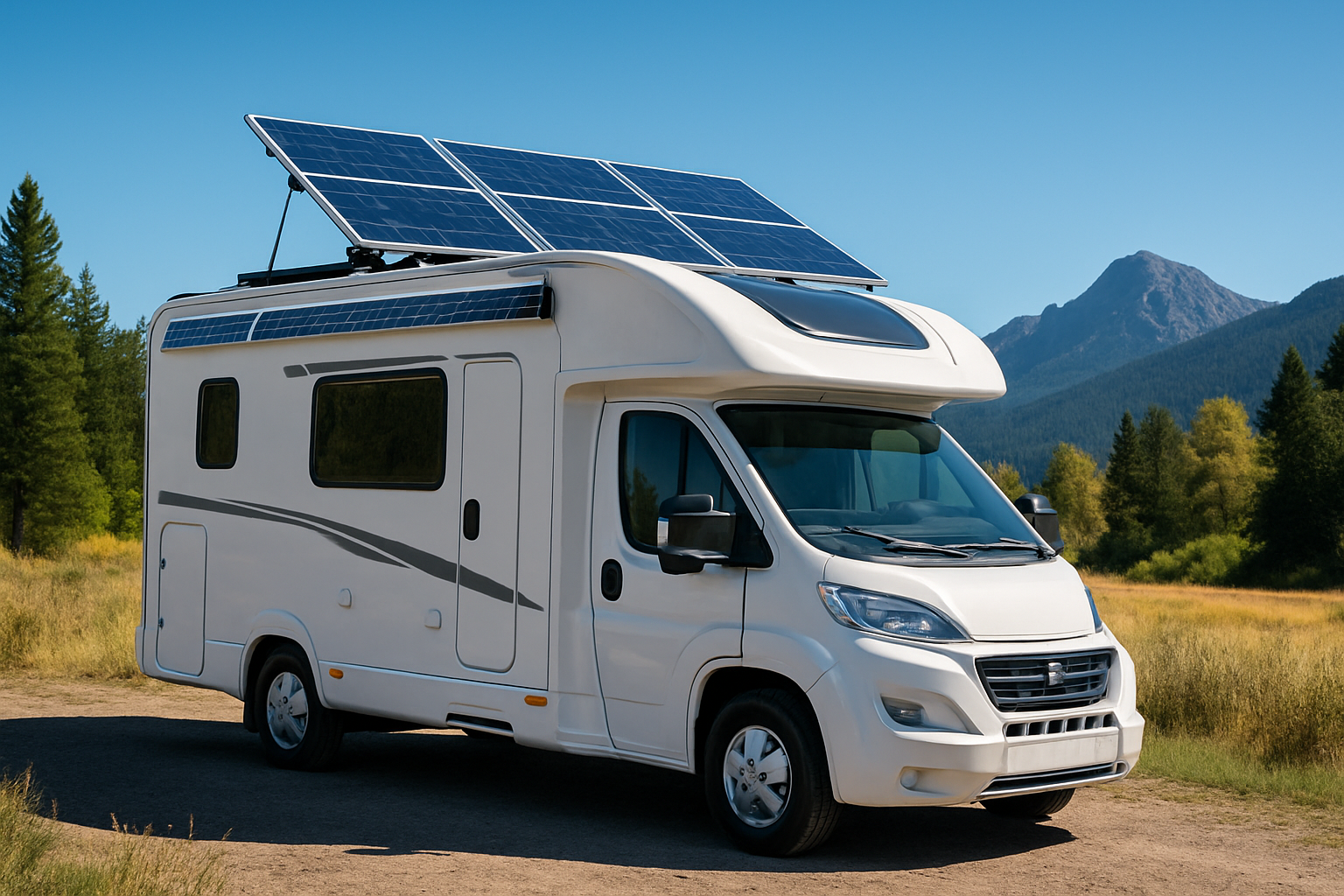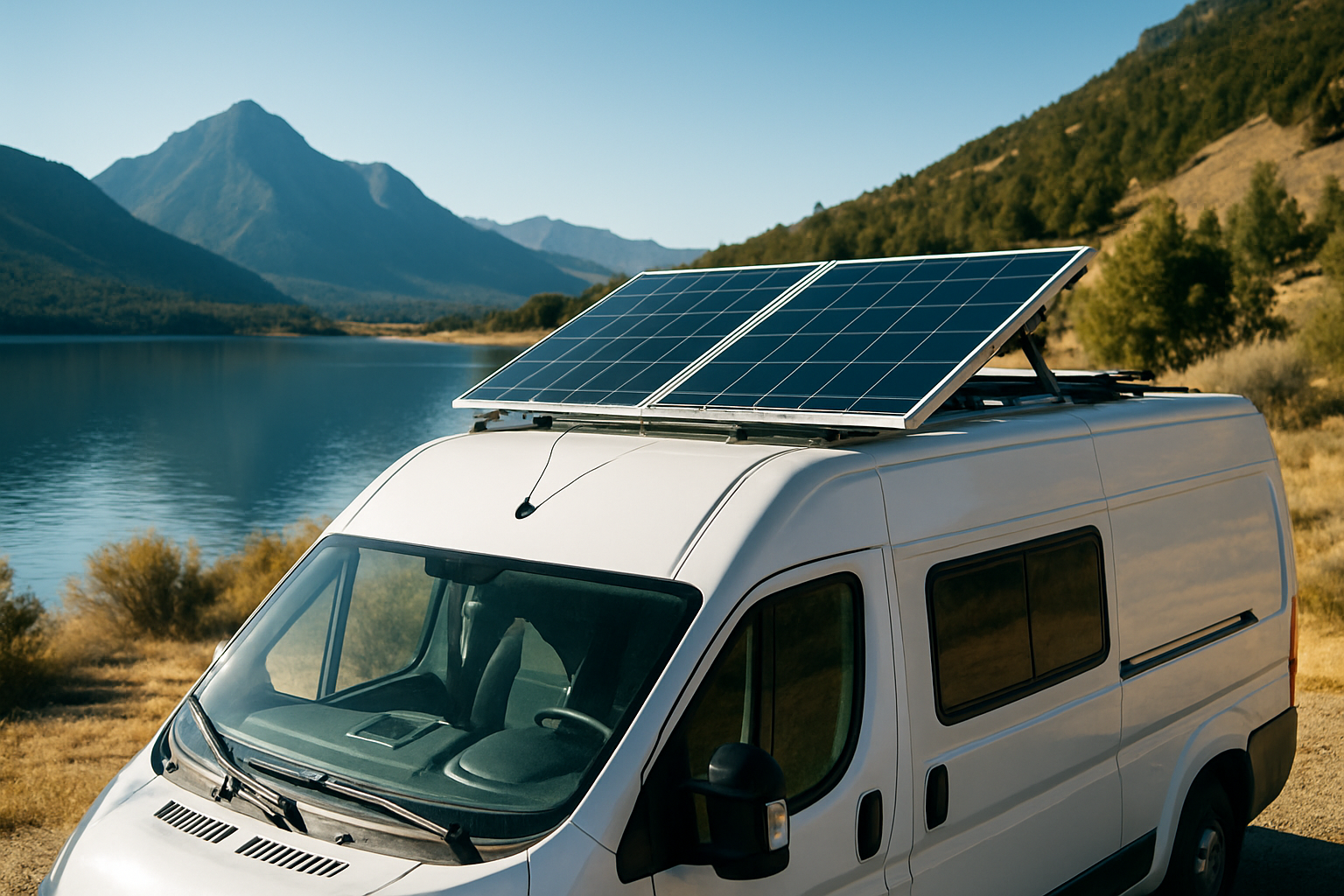Embarking on a journey with your RV or campervan offers unparalleled freedom. Powering your adventures with solar energy enhances this independence, allowing you to stay off-grid longer. However, many RV owners encounter frustrating and expensive issues due to common solar setup errors. Understanding these pitfalls helps you build a robust and reliable power system.
This guide reveals ten frequent RV solar mistakes. You will learn how to prevent them, ensuring your solar power system performs optimally. We focus on practical advice and technical details, helping you achieve true energy independence on the road.

Planning Your RV Solar System: Avoiding Initial Missteps
A successful RV solar setup begins with thorough planning. Skipping this crucial step often leads to underperforming systems and unexpected costs.
1. Underestimating Your Power Needs
Many RV owners miscalculate their daily energy consumption. This leads to an undersized system that cannot keep up with demand. Begin by listing all appliances you plan to use, noting their wattage and estimated daily usage hours. For example, a refrigerator might draw 60 watts for 12 hours a day, consuming 720 watt-hours. Summing these values gives you your total daily watt-hour requirement.
Once you have your total, factor in a buffer for cloudy days or increased usage. A common mistake is assuming sunny conditions every day. Proper calculation ensures your solar panels and battery bank can consistently meet your needs, even when the sun is not at its peak.
2. Choosing Incompatible Components
Your RV solar system is a collection of interconnected parts: solar panels, charge controller, batteries, and an inverter. Each component must work harmoniously. Using a 12V charge controller with a 24V battery bank, for instance, creates efficiency losses or system failure. Similarly, an inverter that cannot handle your peak appliance load will trip or fail.
Ensure all components are rated for the same voltage and can handle the current requirements. For instance, a high-quality solar inverter efficiently converts DC power from your batteries into usable AC power for your appliances. Selecting reliable components from reputable manufacturers helps guarantee system compatibility and longevity.
Installation Errors: Ensuring a Secure and Efficient Setup
Even with perfect planning, installation mistakes can compromise your system's performance and safety.
3. Improper Solar Panel Placement and Mounting
The angle and orientation of your solar panels significantly impact energy production. Panels mounted flat on an RV roof capture less sunlight, especially during morning and evening hours or in winter. While adjustable mounts offer flexibility, fixed mounts need careful positioning.
Aim for a south-facing orientation (in the Northern Hemisphere) and an angle that maximizes sun exposure. Securely mount your panels to withstand road vibrations and wind. Loose panels pose a safety hazard and can suffer damage. Use appropriate mounting hardware designed for RVs to prevent leaks and structural damage to your roof.
4. Incorrect Wiring and Fusing
Wiring mistakes are a leading cause of RV solar failures, ranging from inefficient power transfer to fire hazards. Using wires that are too thin for the current they carry causes voltage drop and overheating. Incorrect fusing leaves your system vulnerable to surges, potentially damaging expensive components like your solar charge controller or inverter.
Always use appropriately gauged wires. Consult wiring diagrams and adhere to electrical codes. Install fuses or circuit breakers at every critical point, including between panels and the charge controller, and between the battery bank and the inverter. This protects your system and ensures safe operation.
5. Overlooking the Charge Controller's Role
The solar charge controller is the brain of your charging system. It regulates the voltage and current from your solar panels to your batteries, preventing overcharging and extending battery life. Neglecting this component or choosing the wrong type is a costly mistake.
There are two main types: PWM (Pulse Width Modulation) and MPPT (Maximum Power Point Tracking). MPPT controllers are generally more efficient, especially in varying light conditions or when your panel voltage is significantly higher than your battery voltage. They can boost energy harvesting by up to 30% compared to PWM controllers. Invest in a quality MPPT charge controller that matches your system's voltage and current ratings for optimal battery health.
Battery Blunders: Powering Your Adventures Reliably
Your battery bank is the heart of your RV's off-grid power. Mistakes here directly impact your ability to store and use solar energy.
6. Choosing the Wrong Battery Type
Not all batteries are created equal for solar applications. Starting batteries (like those in your car) are designed for short bursts of high power, not deep cycling. Using them for solar storage drastically shortens their lifespan. Deep-cycle batteries, such as lead-acid or lithium iron phosphate (LiFePO4) batteries, are built for repeated deep discharges and recharges.
LiFePO4 batteries offer superior performance, safety, and longevity compared to traditional lead-acid options. They provide a higher usable capacity, faster charging, and significantly more charge cycles. Our LiFePO4 batteries, for example, are engineered for high performance and reliability, making them an excellent choice for demanding RV applications. While the upfront cost may be higher, their extended lifespan and efficiency often result in lower long-term costs.
7. Improper Battery Sizing
An undersized battery bank cannot store enough energy to last through periods without sun. An oversized bank represents unnecessary expense. Your battery capacity should match your daily energy consumption, with extra capacity for autonomy (e.g., 2-3 days without sun). For instance, if you use 100 Ah per day, a 200 Ah battery bank provides 2 days of autonomy at 100% depth of discharge for LiFePO4, or 50% for lead-acid.
Calculate your daily energy needs in Amp-hours (Ah) at your battery voltage. Then, select a battery bank that offers sufficient capacity, considering the battery chemistry's usable depth of discharge. This ensures you have power when you need it most.
8. Neglecting Battery Maintenance and Monitoring
Batteries, especially lead-acid types, require regular maintenance like checking water levels and cleaning terminals. Even maintenance-free batteries benefit from monitoring. Ignoring battery health leads to premature failure and reduced capacity.
Install a battery monitor to track voltage, current, and state of charge. This gives you real-time insight into your power levels and helps identify potential issues early. Proper monitoring helps you avoid deep discharges that shorten battery life and ensures you always have enough power. For example, the International Energy Agency (IEA) emphasizes the importance of grid flexibility and storage, a principle that applies equally to smaller off-grid systems like those in RVs, highlighting the need for effective monitoring and management .
System Management and Long-Term Care: Sustaining Your Solar Investment
After installation, ongoing care and smart usage prevent many common problems.
9. Ignoring System Expansion Limitations
Many RV owners start with a small solar setup and plan to expand later. However, they often overlook the limitations of their initial components. Your charge controller, wiring, and inverter all have maximum capacities. Adding more panels without upgrading these components can lead to overloading, reduced efficiency, or even damage.
Plan for future expansion from the outset. Choose components with some headroom for additional panels or battery capacity. This saves you from having to replace perfectly functional, but undersized, equipment later. Our off-grid solar solutions are designed with scalability in mind, allowing for future growth as your energy needs evolve.
10. Lack of Regular Cleaning and Inspections
Solar panels are exposed to the elements, accumulating dirt, dust, leaves, and bird droppings. A dirty panel produces significantly less power. A thin layer of dust can reduce output by 5-10%, while heavy soiling can cut it by 20% or more. Loose connections or damaged wiring can also go unnoticed.
Regularly clean your solar panels with water and a soft brush. Perform visual inspections of all wiring, connections, and mounting hardware. Tighten any loose connections and address any signs of wear or corrosion promptly. Proactive maintenance ensures your system operates at peak efficiency and extends its lifespan.
Summary of Common RV Solar Mistakes and Solutions
| Mistake Category | Common Error | How to Avoid |
|---|---|---|
| Planning | Underestimating power needs | Calculate daily watt-hours; add a buffer. |
| Planning | Incompatible components | Ensure voltage and current ratings match across all parts. |
| Installation | Improper panel placement | Orient south, angle for sun, use secure RV-specific mounts. |
| Installation | Incorrect wiring/fusing | Use correct wire gauge; install fuses/breakers at critical points. |
| Installation | Overlooking charge controller | Choose an MPPT controller matched to your system. |
| Batteries | Wrong battery type | Select deep-cycle batteries (e.g., LiFePO4). |
| Batteries | Improper battery sizing | Match Ah capacity to daily needs + autonomy. |
| Batteries | Neglecting maintenance | Monitor state of charge; perform regular checks. |
| Management | Ignoring expansion limits | Plan for future growth; choose scalable components. |
| Management | Lack of cleaning/inspection | Clean panels regularly; inspect wiring and connections. |
Achieving Energy Independence on the Road
Building a reliable RV solar system requires careful consideration and attention to detail. By understanding and actively avoiding these ten common mistakes, you set yourself up for success. A well-designed and properly maintained solar setup provides consistent power, enhances your travel experience, and offers true energy independence.
Our commitment to reliable and scalable energy solutions helps RV owners achieve this independence. With high-performance LiFePO4 batteries, integrated home energy storage systems, and efficient solar inverters, you gain the peace of mind that comes from a robust power supply, wherever your adventures take you.
Frequently Asked Questions About RV Solar
How much solar power do I need for my RV?
Your exact needs depend on your appliance usage. Start by calculating the total watt-hours consumed daily by all your devices. Then, factor in sunlight hours and desired autonomy (days without sun) to determine appropriate panel wattage and battery capacity. A typical RV might need 200-600 watts of solar panels and 100-400 Ah of LiFePO4 battery capacity.
Can I mix different types of solar panels on my RV?
You can mix different panels, but it requires careful planning. Ideally, panels connected in series should have similar current ratings, and panels in parallel should have similar voltage ratings. Using an MPPT charge controller often provides more flexibility when mixing panels, as it optimizes power harvesting from each string.
How often should I clean my RV solar panels?
The frequency depends on your travel environment. In dusty areas or if you notice a visible buildup of dirt, clean them more often. Generally, a monthly or bi-monthly cleaning helps maintain optimal performance. A simple rinse with water and a soft brush is usually sufficient.
What is the lifespan of an RV solar battery?
The lifespan varies significantly by battery type. Traditional lead-acid batteries typically last 2-5 years. High-quality lithium iron phosphate (LiFePO4) batteries, like those we offer, can last 10-15 years or more, providing thousands of charge cycles. Proper charging and discharge practices also extend battery life.
Is it worth installing solar on my RV?
For many RV owners, installing solar is a valuable investment. It provides freedom from shore power, reduces generator noise and fuel consumption, and offers a sustainable energy source. While the initial setup cost exists, the long-term benefits of energy independence and reduced operating expenses often outweigh it.
Disclaimer: This article provides general technical information and is not a substitute for professional electrical advice. Always consult with a qualified technician for specific system design, installation, and maintenance, especially when dealing with high-voltage systems.





Leave a comment
All comments are moderated before being published.
This site is protected by hCaptcha and the hCaptcha Privacy Policy and Terms of Service apply.